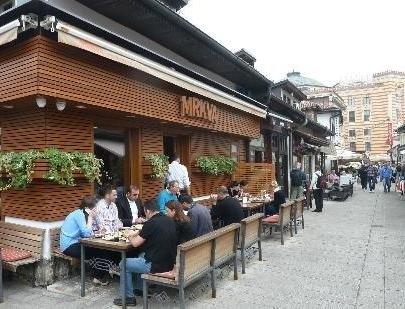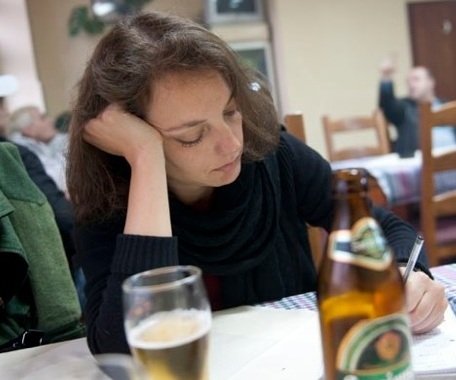In Bosnia-Herzegovina ćevapčići and kupus are the Italian equivalent of pizza, spaghetti and mandolins. And no matter how stereotypes may be limited, in the same way as it would be absurd to visit Italy without ordering at least a dish of pasta or a pizza margherita (mandolins, in fact, can be easily avoided) the same would go if one were to arrive in Sarajevo and didn’t order at least a dish of those small, delicious and spicy meat sausages made with beef often mixed with lamb (but never pork) served in flattened soft bread rolls (called somun, I’ll later tell you more about these) and sided with a good dose of raw onions and an iced beer (even though, philologically speaking, yogurt should be the preferred drink).

Mrkva in Sarajevo (photo TripAddvisor)
I write about culinary Balkans starting from Bosnia Herzegovina because I live here in Sarajevo (where, by the way, from August 16th to August 24th the
Film Festival will take place, so if you’re on holiday here, stop by), and I break the ice with
ćevapčići (also known as
ćevapi) because they are the Caudine Forks, together with
rostilj,
kupus,
ajvar and
rakija, of local gastronomy, so much so that the Bosnians themselves say that you have not visited true Bosnia Herzegovina unless you have tasted them.
The etymology of the word
ćevap goes back to the Arabic
kebab to which a diminutive suffix typical of Slavish languages - namely
čići - is added, even though they are often called simply
ćevap/ćevapi. As for the pronunciation, I’ll try to give you a couple of tips on phonetics:
ć is pronounced as “ch” in
chat or
cheap while
č is like “tch” in
catch. Therefore it sounds something like
chevaptchichi (I beg my Bosnian teacher to forgive me for this explanation).
They were introduced during the Ottoman Balkan expansion in the 15th century and since then they’ve become the national dish. Those in Sarajevo are among the most famous and between one village and the other – but in BiH (=Bosnia Herzegovina) even between once city and the other – they can differ both with regards to composition and presentation. You can eat them at any time, day or night, and they are served in restaurants but the best thing is to order them from a
ćevabdžinica, a shop or kiosk specialised in
ćevapi and similar products (such as
pljeskavica, which has a very similar mixture to that of
ćevapi but the meat in this case is grilled and flattened like a hamburger).

Serena Guidobaldi, twitter @serenoccia (photo by Paolo della Corte)
The best
ćevapi in Sarajevo? Of course it’s a question of personal taste and kinship but the names on which everybody agrees are the following, all in Baščaršija (the historic centre of the Turkish city). Here they are:
Željo, Kundurdžiluk 12
Mrkva, Bravadžiluk 13
Hodžić, Bravadžiluk 34
Galatasaray, Gazi Husrev Begova 44.
This other place, instead, is in front of the bus station, a few metres from the railway station (even though a local friend of mine recently told me it has worsened):
Zmaj in Azize Šaćirbegović 68. A dish can cost 5 euros at the most. But if you spend this much, it means you overindulged, so don’t tell me then that you can’t digest them.
Are you already on your way to Bosnia Herzegovina? Then download the free apps edited by Oxfam Italia with travel info to discover this country.
Vidimo se! (which here means more or less “See you”).